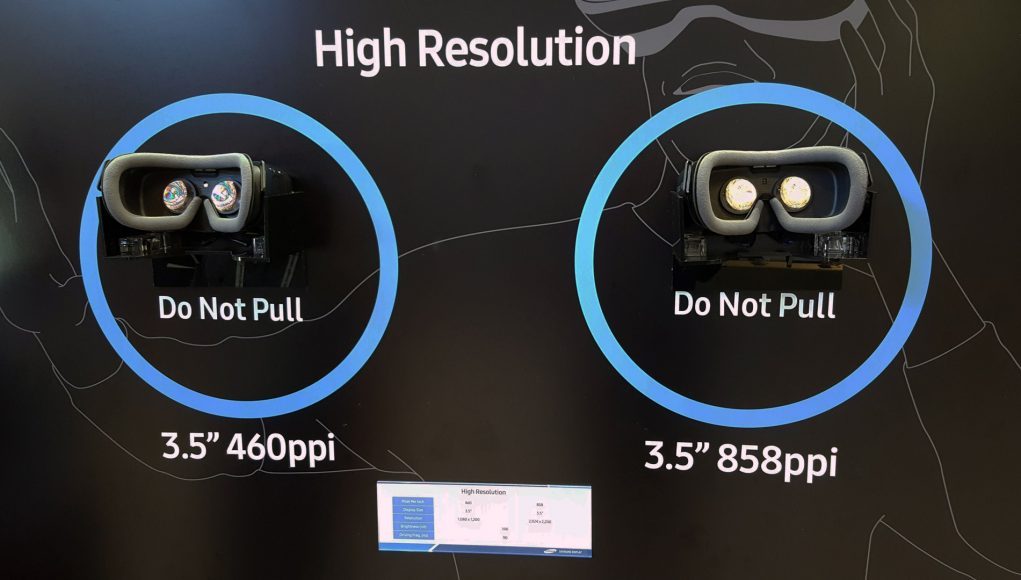At last week’s Display Week 2017 conference, Samsung showed off a new ultra-high resolution display for VR headsets that more than triples the pixel count of the displays in the Oculus Rift and Vive.
A new display from Samsung targeting use in VR headsets packs a whopping 2,024 x 2,200 pixels into a 3.5″ form-factor, delivering an impressive 858 PPI, nearly twice the 460 PPI of the Rift and the Vive. The display is also capable of a 90Hz refresh rate and 100 nits brightness. From a raw pixel-count standpoint, Samsung’s new VR display has 3.4 times the number of pixels in those headsets.
The new display was shown off by the company at Display Week 2017. Seen in photos posted to Reddit by user ‘Krenzo’, the display was shown side-by-side against what we presume to be the same 3.5″ 1,080 x 1,200 display presently used in the Rift and Vive. Both the old display and the new were shown inside Gear VR shells; seen through the lens was a high-resolution image of Where’s Waldo for comparison.
Photos through the lens of each headset shared by Krenzo reveal a major reduction in the so-called ‘screen door effect’ and the visibility of individual pixels seen on Samsung’s new VR display.
Samsung currently provides the displays in both the Rift and Vive—both of which use two individual displays of 1080×1200 resolution per-eye with a 90Hz refresh rate—which means it’s quite likely that this new display is destined for future generations of those headsets.
Samsung also makes the smartphone displays in the company’s Gear VR compatible phones which actually have a higher 1,440 x 1,280 per-eye resolution than the Rift or Vive, but are not as suitable for those headsets due to the aspect ratio.
Even when compared to the higher resolution Gear VR display, the new Samsung VR display has 2.4x more pixels and a substantial increase in PPI.









